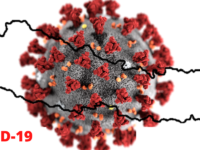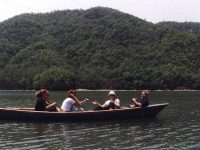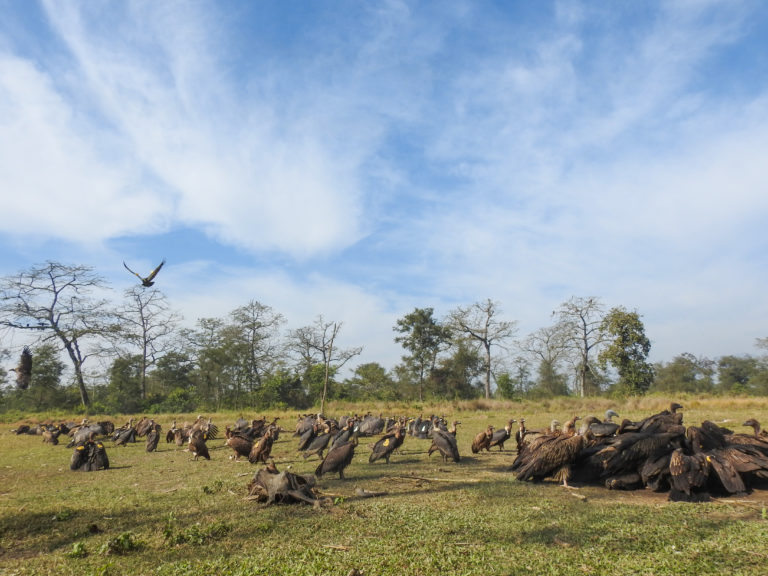For a small country, Nepal is rich in biodiversity and is therefore globally important from a conservation point of view. Conservation efforts were ramped up in Nepal when vulture numbers started to nosedive across South Asia. But… something was different this time! Instead of only following conservation models developed in other countries, local communities and conservationists from Nepal came up with their own innovative ideas and set examples for the world to follow. Read on to find out.
- Many species:
Of the 23 species of vultures in the world, 9 can be found in Nepal. While six species of vultures call Nepal their permanent home, the remaining three species are seasonal migrants (tourists). - A catastrophe!
Before the 1990s Nepal had millions of vultures, so many that no one bothered to count. But then they started to disappear, leaving conservationists worried. In Nepal, scientists began long-term monitoring of vultures in 2002. This monitoring has helped scientists keep track of how well (or badly) the vultures are doing. Results for Nepal showed a 91% decline in less than a decade. Neighboring countries like India and Pakistan had 99% declines in about 15 years. - Who killed the vultures?
In 2003, scientists discovered that the decline in vultures in Nepal and across South Asia was primarily due to a veterinary drug called “Diclofenac”. This drug is widely used in South Asia to reduce pain and fever, but if livestock die with the drug still in their body, vultures that scavenge on the dead animal die from poisoning. The drug Diclofenac was banned in 2006 (in Nepal, India, and Pakistan) after a vulture-safe alternative drug called Meloxicam was identified. In 2013 large (30ml) vials of diclofenac for human use were banned in Nepal because it was being manufactured and sold primarily for use on domestic animals. The long-term vulture monitoring studies now show that the decline of vultures has stopped in Nepal and populations may be on the up! - The World’s first Vulture Restaurant:
The world’s first community-managed vulture safe-feeding site (Jatayu Restaurant) was established in 2006 near Kawasoti, Nawalparasi, along the buffer zone of Chitwan National Park. The project was unique, because it collected old cattle from neighboring villages, placed them in a cow-rescue center (retirement home for cows), and fed the cattle to vultures (once the cattle died a natural death and were free of toxic drugs). As a result, the number of vultures and numbers of nests of vultures has increased in the area. Thousands of tourists (Nepali and foreign) have visited the area. This amazing idea was developed by the local community themselves! This brilliant project has been replicated in many countries. Currently, there are six such restaurants in Nepal, the most in the world!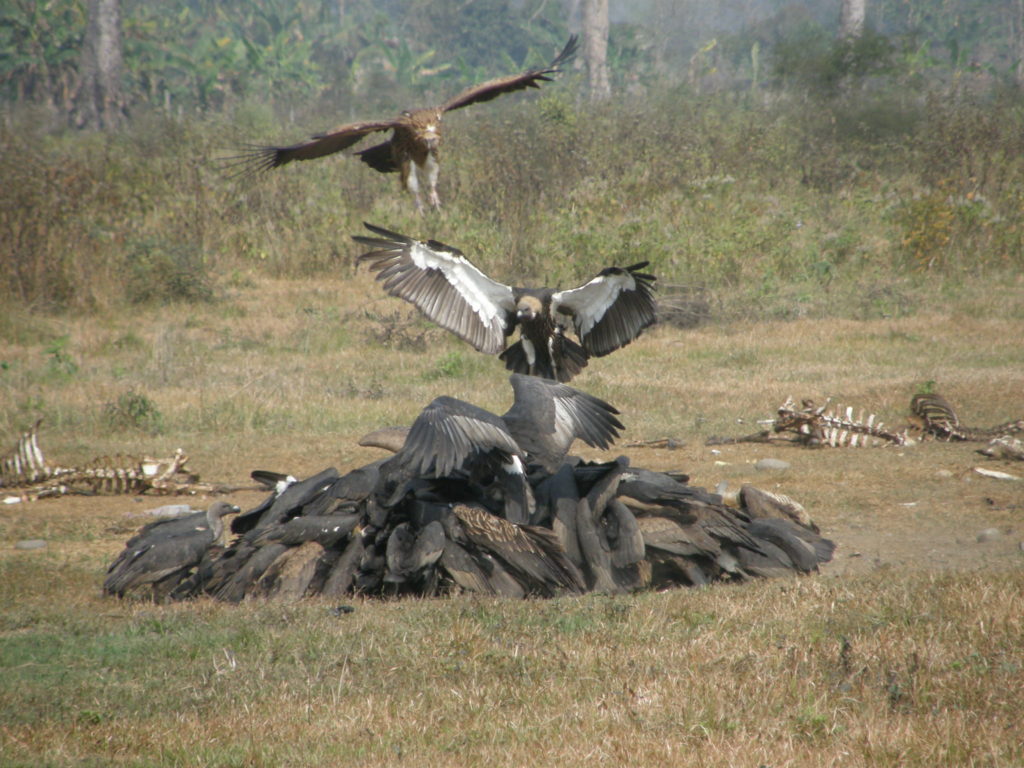
Vulture Feeding-Jatayu Restaurant-Kawasoti, Nawalparasi. - Captive Breeding:
A Vulture Conservation and Breeding Center was established in 2008 at Chitwan National Park. Here vultures are reared in captivity with the aim of releasing them back in the wild when the outside environment is safe (See #9 below). - Vulture Awareness Day:
Since 2009, International Vulture Awareness Day is being celebrated across Nepal and the rest of the world on the first Saturday of September. Nepal leads the way in celebrations with many communities, schools, youth clubs, and organizations coming together to raise awareness about the vulture’s plight.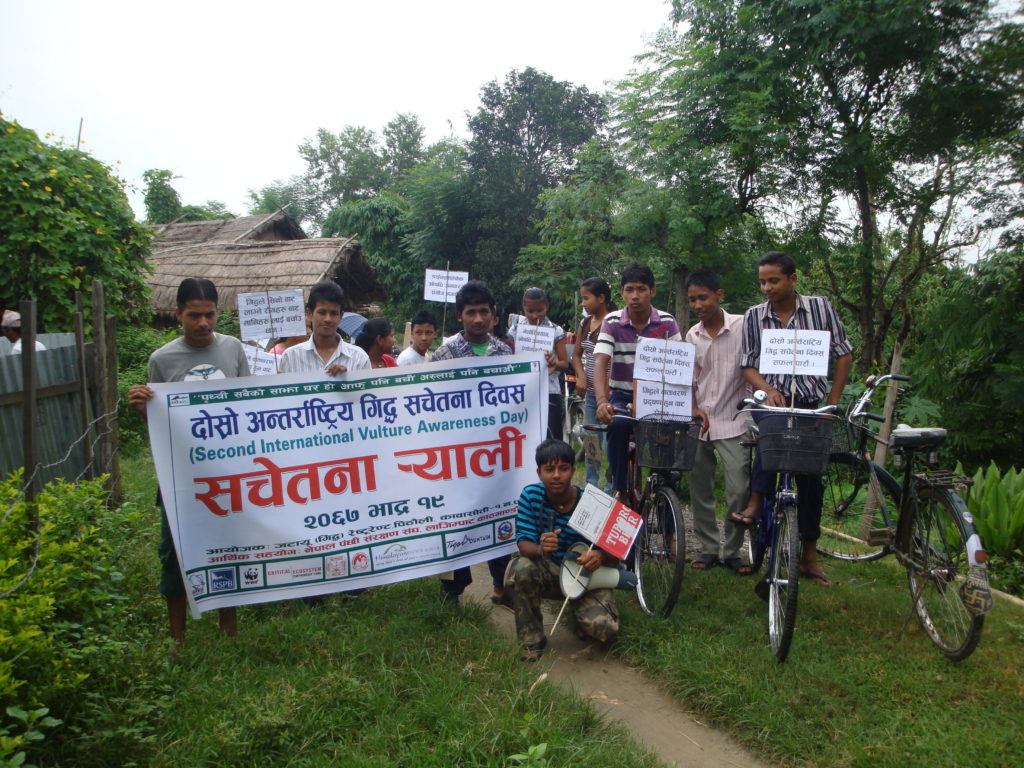
Celebrating International Vulture Awareness Day. - A safe zone for vultures (World’s first!):
Nepalese scientists developed the concept of “Vulture Safe Zone” in 2009. Vulture Safe Zones are large area that are deemed safe for vultures because diclofenac is no longer used in the area and the local people are participating actively in conserving vultures. Diclofenac free areas make up the building blocks of the larger Vulture Safe Zone. Dang district was the first to be declared as a “Diclofenac Free District” in 2010. Since then, 74 of the 77 districts in Nepal have been declared as diclofenac free to create the world’s first Vulture Safe Zone! This concept has been embraced across South Asia and is now being replicated in parts of Africa. - Keeping track:
Scientists have been keeping track of vulture movements so they can make informed decisions for their conservation. The first set of vultures were fitted with satellite transmitters in 2008. Since then more vultures, belonging to three species, have been fitted with satellite transmitters.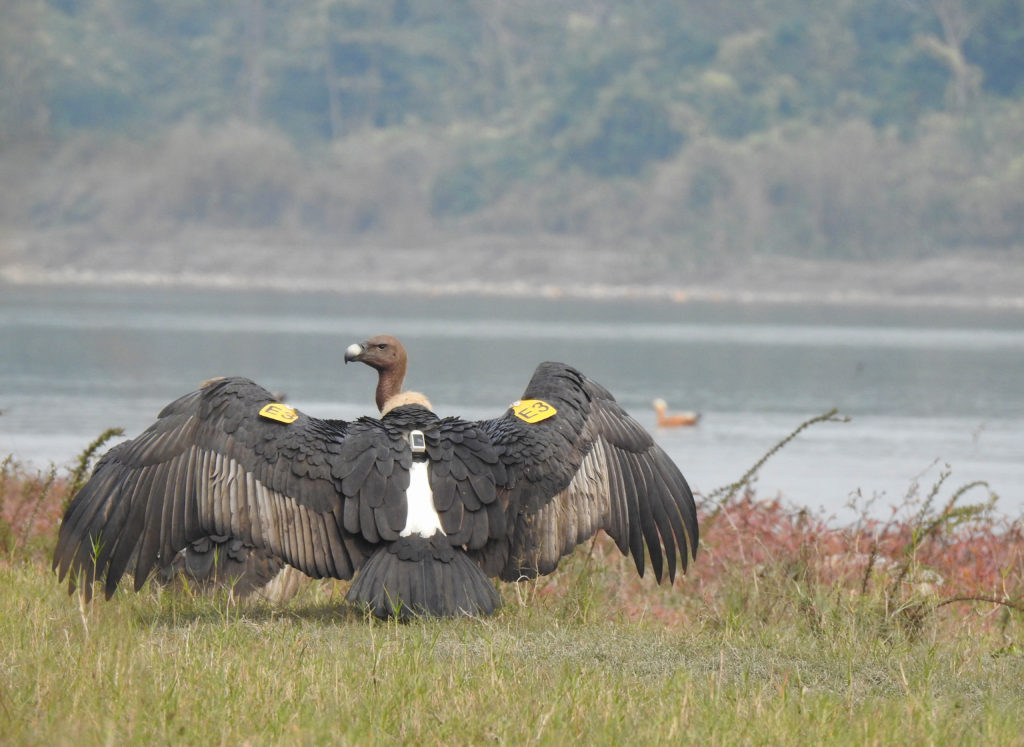
Critically Endangered White-rumped Vulture with satellite tag which tells its movement. - Back to the wild:
The first-ever release of captive-bred South Asian vultures took place in 2017… in the world’s first community-managed vulture restaurant (and the heart of the world’s first Vulture Safe Zone). The White-rumped Vultures, bred and raised in captivity at Chitwan National Park, continue to be released in small batches (31 so far). All vultures have visible tags and are fitted with satellite transmitters for ease of monitoring. Isn’t it wonderful how the different conservation components (e.g., restaurant, captive breeding, monitoring, vulture safe zone) all came together for this outcome?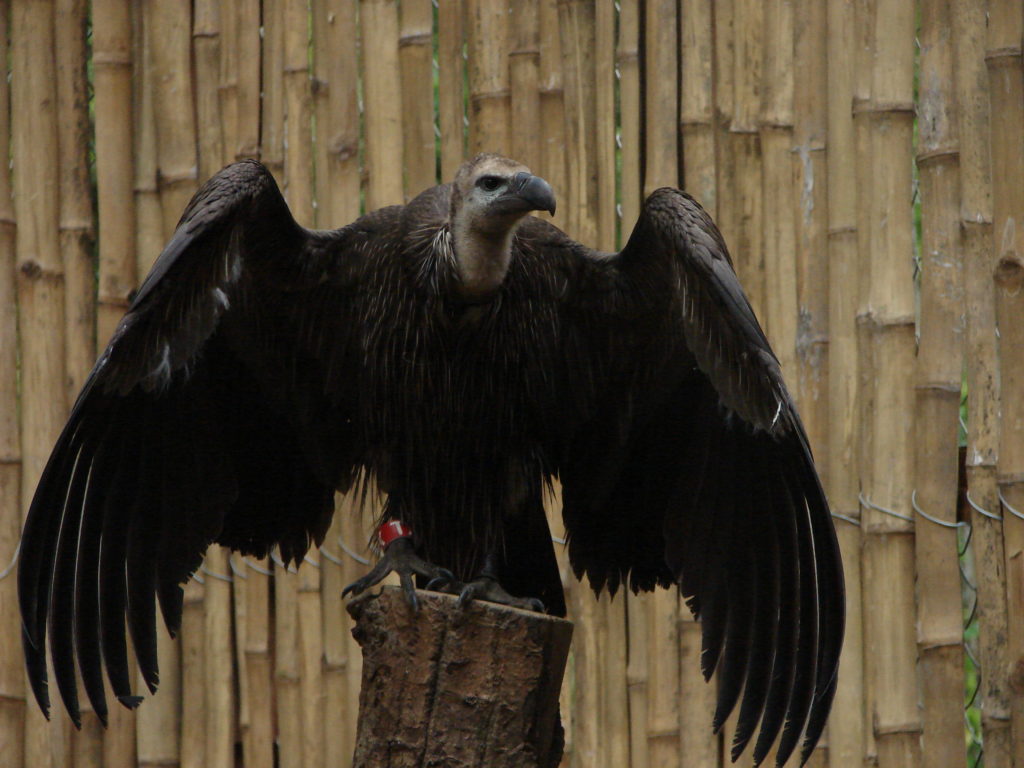
Vulture at captive breeding center. - Local to global: One of the amazing stories about vulture conservation in Nepal is the partnership between local communities, national and international organizations, governments, local people, schools, veterinarians, pharmacists, scientists, policymakers, reporters, and many others. It has been a tireless effort from all sides and it will continue until all nine species of vultures in Nepal are safe. This has only been possible because all parties listened to what each other had to say and collaborated for the common good. Nepal is proud to have led the global vulture conservation effort and introduced to concept of “Community-managed vulture restaurant” and “Vulture Safe Zone”.
Anand Chaudhary is a PhD student at Baylor University, Texas, USA. He is a member of IUCN Vulture Specialist Group and previously worked as Vulture Conservation Program Manager at Bird Conservation Nepal (2008-2011).
Krishna Prasad Bhusal is the Vulture Conservation Program Manager at Bird Conservation Nepal since 2012. He is a member of IUCN Vulture Specialist Group and member of Technical Advisory Committee for Saving Asia’s Vultures from Extinction (SAVE).






